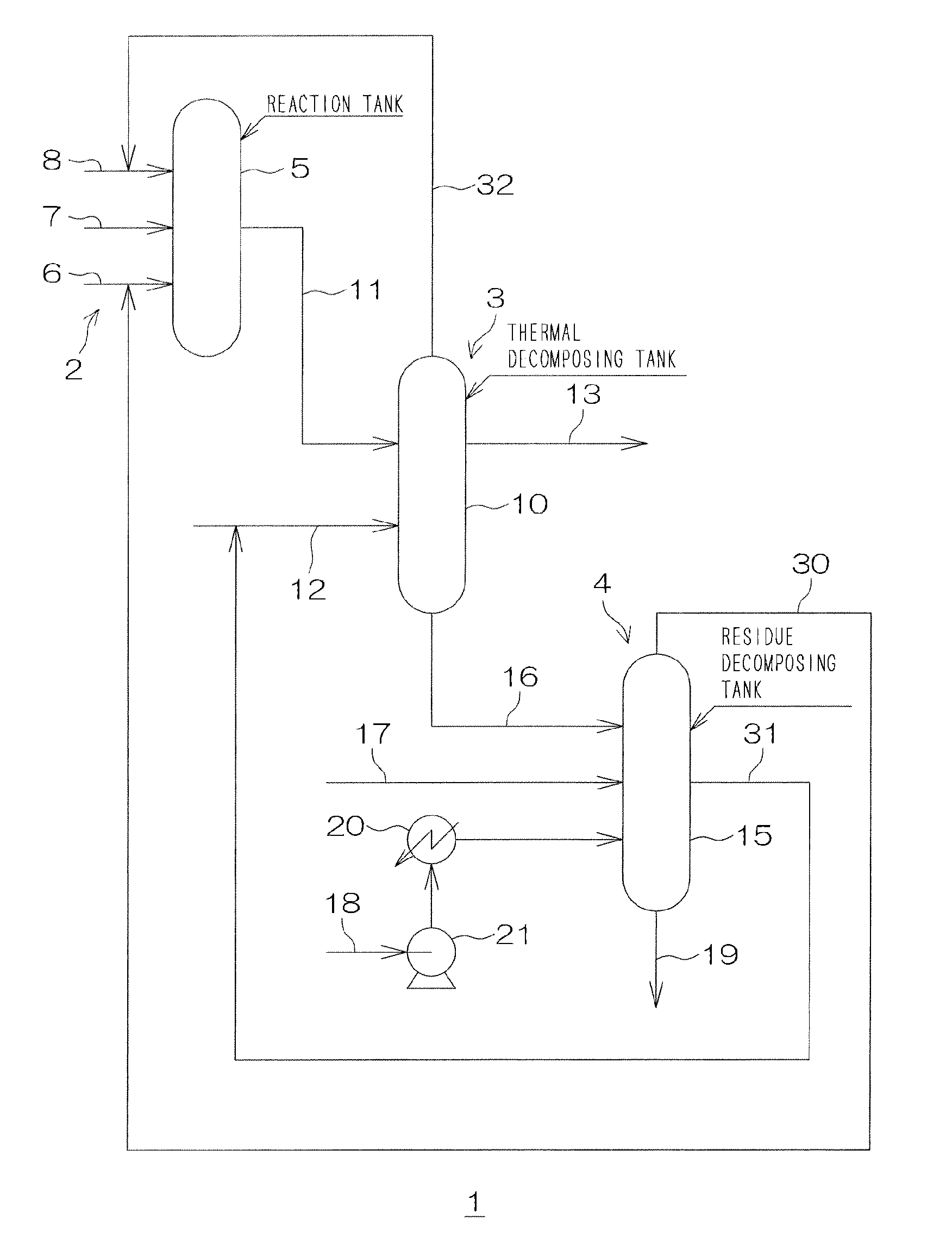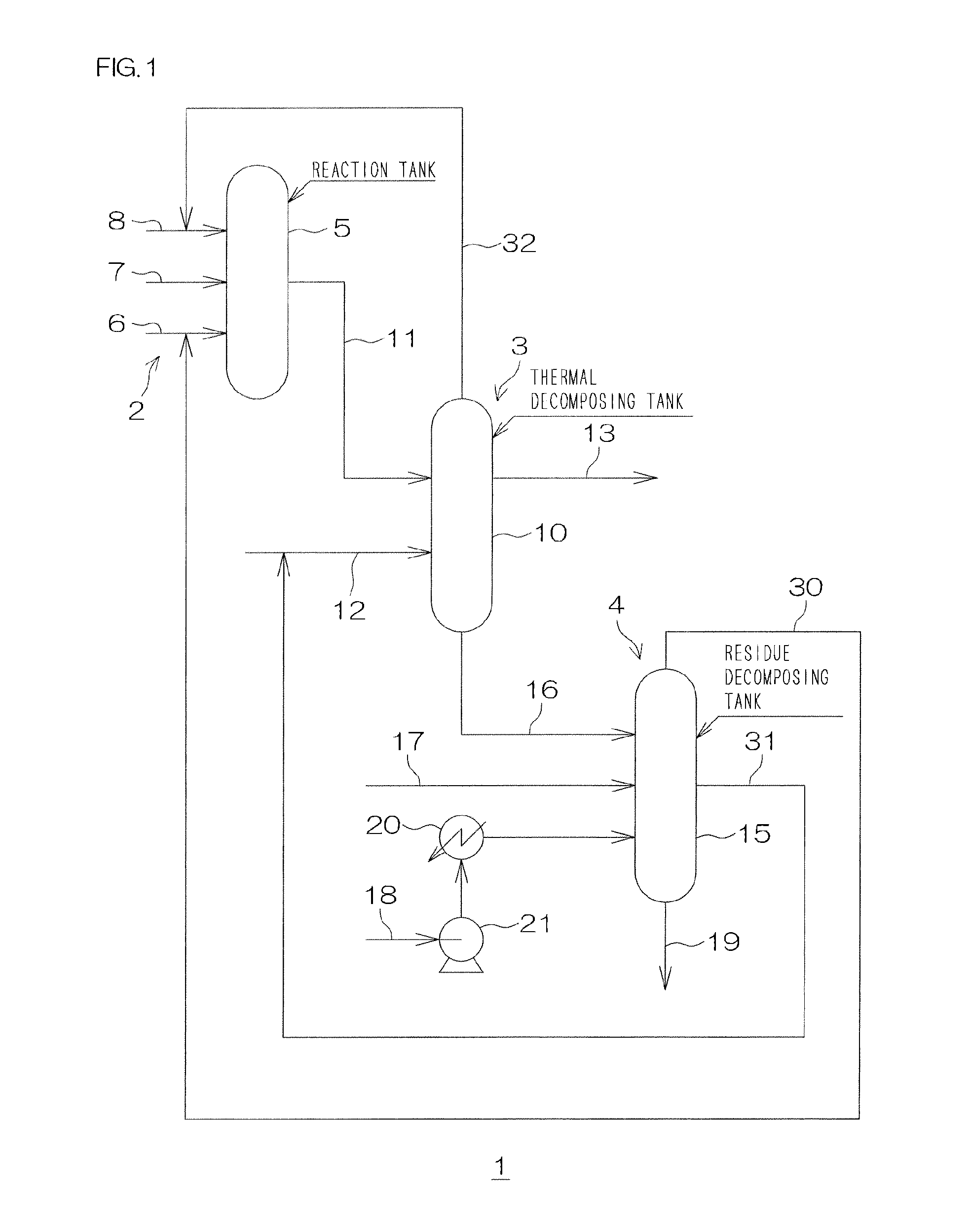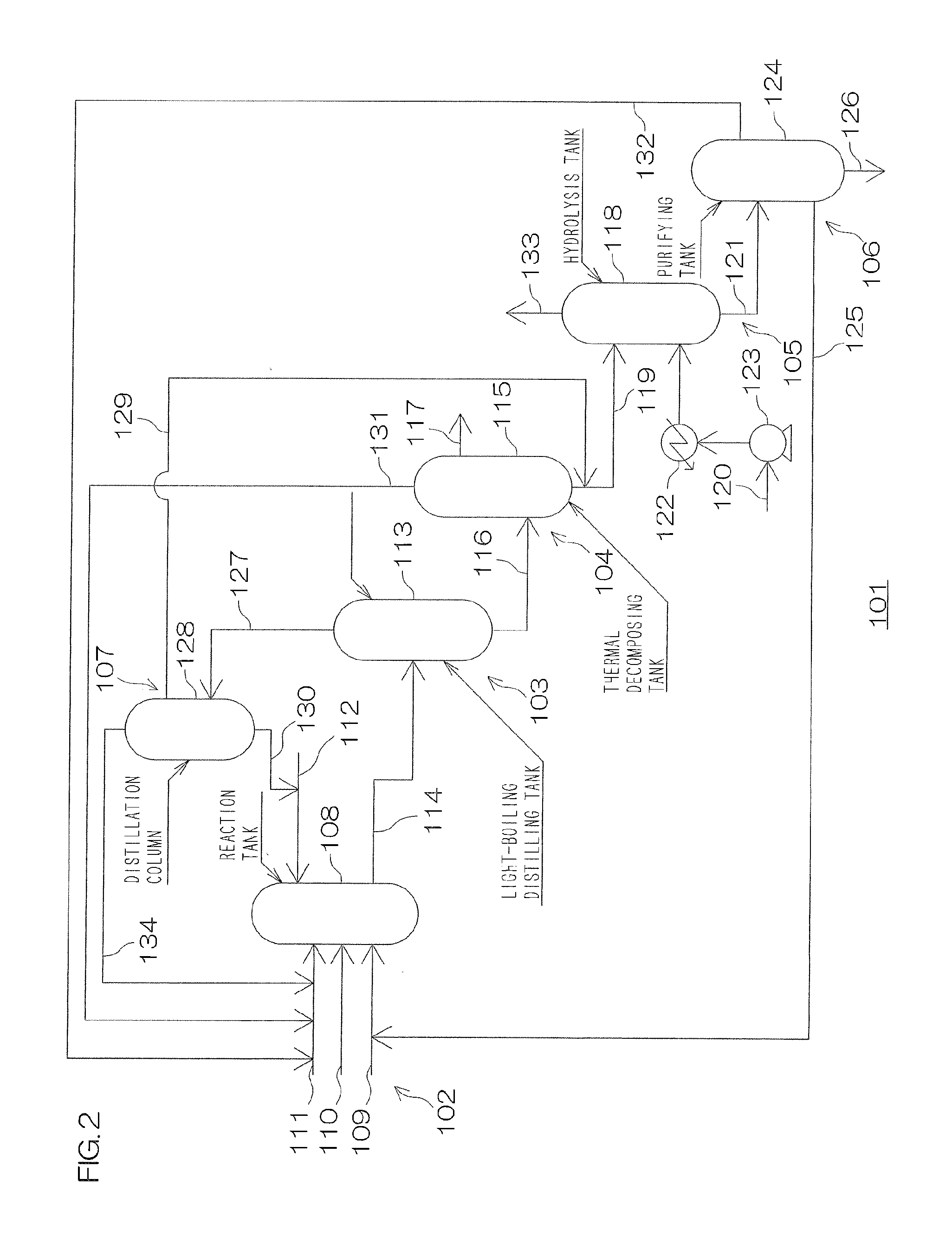Method for treatment of isocyanate residue, and method for treatment of carbonate
a technology of isocyanate and carbonate, which is applied in the field of isocyanate residue treatment, can solve the problems of difficulty in industrially producing polyurethanes (carbamates) with efficiency, and achieve the effect of industrially effective us
- Summary
- Abstract
- Description
- Claims
- Application Information
AI Technical Summary
Benefits of technology
Problems solved by technology
Method used
Image
Examples
preparation example 1
(1) Carbamate Formation Reaction
[0491]A 1-liter SUS autoclave equipped with a pressure control valve, a reflux condenser, a gas-liquid separator, and a stirrer was charged with a mixture of 2,4-TDA (76.5 g:0.626 mol), urea (113 g:1.87 mol), and 1-butanol (255 g:3.44 mol), and further charged with a mixture of zinc p-toluenesulfonate (0.64 g:1.57 mmol) as a catalyst and 1-butanol (23.4 g:316 mmol). While a nitrogen gas was allowed to flow at 1 liter per minute and stirred at 500 rpm, the charged mixture was allowed to react for 4 hours during which the internal pressure was controlled with the pressure control valve so that the reaction temperature was maintained at 215° C.
[0492]When a portion of the reaction solution was sampled and quantified, it was confirmed that 2,4-bis(butoxycarbonylamino)toluene was produced at a yield of 86.4% by mol based on 2,4-diaminotoluene. It was also confirmed that mono(butoxycarbonylamino)aminotoluene was produced at a yield of 3.2% by mol.
(2) Vacuum ...
example 1
[0498]A 36-mL SUS autoclave equipped with a thermocouple and a pressure regulating valve was charged with 3.0 g of the acetone-insoluble filter residue obtained in Production Example 1 and 5.8 g of barrel process oil B-05, and the system was further filled with ion exchange water. The reactor was placed in an electric furnace, and the charged mixture was allowed to react for 20 minutes while the internal pressure was adjusted with the pressure regulating valve so that the reaction temperature and the internal pressure were maintained at 280° C. and 20 MPa, respectively. At this time, the hydrolytic ratio (a mass ratio of (ion exchange water (high pressure and high temperature water) / acetone-insoluble filter residues (isocyanate residues)) was set at 9.
[0499]As a result, it was confirmed that after the reactor was cooled to room temperature, no solid remained in the recovered reaction solution and all the filter residues were decomposed. When a portion of the reaction solution was sa...
example 2
[0500]The same procedures as in Example 1 were carried out except that the reaction temperature was set to 190° C., to perform the decomposition reaction of the carbamate thermal decomposition residues.
[0501]After the reactor was cooled to room temperature, no solid remained in the recovered reaction solution. The result of HPLC analysis of the reaction solution showed that the recovery rate of 2,4-TDA was 33.9% by mol.
PUM
| Property | Measurement | Unit |
|---|---|---|
| Boiling point | aaaaa | aaaaa |
| Temperature | aaaaa | aaaaa |
| Pressure | aaaaa | aaaaa |
Abstract
Description
Claims
Application Information
 Login to View More
Login to View More - R&D
- Intellectual Property
- Life Sciences
- Materials
- Tech Scout
- Unparalleled Data Quality
- Higher Quality Content
- 60% Fewer Hallucinations
Browse by: Latest US Patents, China's latest patents, Technical Efficacy Thesaurus, Application Domain, Technology Topic, Popular Technical Reports.
© 2025 PatSnap. All rights reserved.Legal|Privacy policy|Modern Slavery Act Transparency Statement|Sitemap|About US| Contact US: help@patsnap.com



